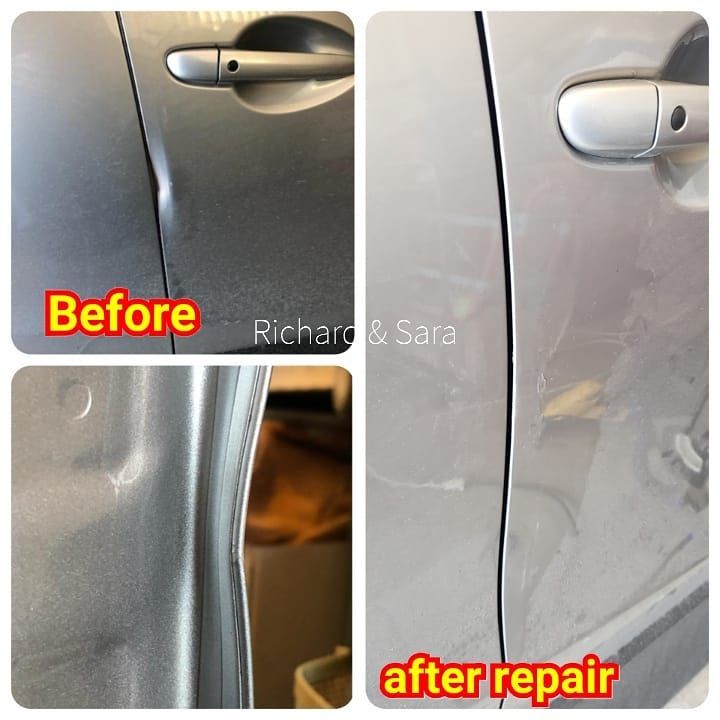It s built up gradually in thin layers until the dent or hole is filled and level with the surface of the metal but it should only be used with dents no more than 4 inches in diameter.
Fill dents in sheet metal.
Sand the primer using a straight back and forth motion.
Apply lab metal right from the can with a putty knife or similar tool.
Lab metal fills dents and flaws in metal and nonmetal parts easily and economically.
Very large dents can be fixed by actually pulling the dent into line with the rest of the sheet metal.
If you sand away too much primer and you can see metal again you ll have to reprime and resand.
Fill a spray bottle with clean water and spray the repair area and the sandpaper.
Place a washer on the screw.
Bondo plastic metal is a product commonly used for filling dents and cracks in metal surfaces usually on automobiles.
Heat special tools and specialized skill are unnecessary.
Drilling numerous holes in and all around a dent slide hammering the riddled metal out plastering.
Again the exact size doesn t matter as long as the washer won t.
Typically the method used by these roving bodywork specialists involves four basic procedures.
Insert a sheet metal screw select a sheet metal screw slightly wider than the hole you ve drilled.
Ease out a dent with moisture applied from within split the cover paper and fill dents with a plaster compound of paper mache chalk zinc and parchment size or actually cut out neighboring areas and push out dents van der reyden 1986 pg 7.
Specially designed suction devices are sold in car repair stores for this purpose.
When you begin to see the old paint show through the primer you ve gone far enough.










